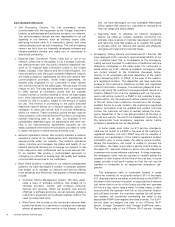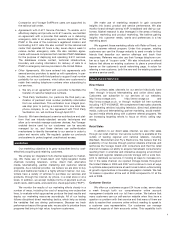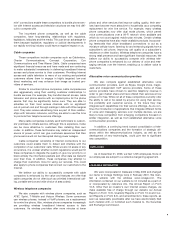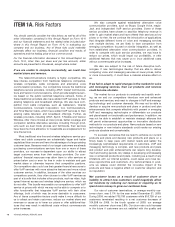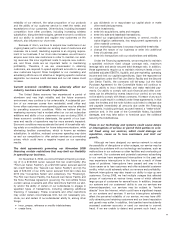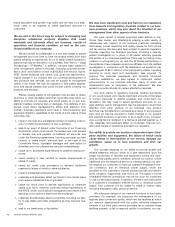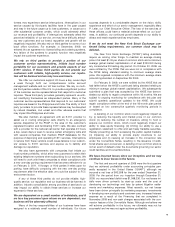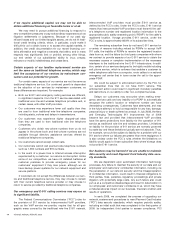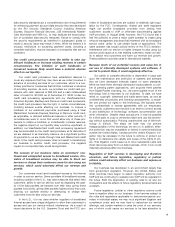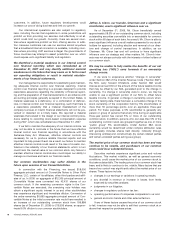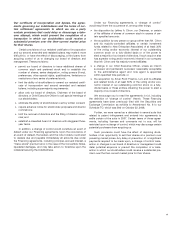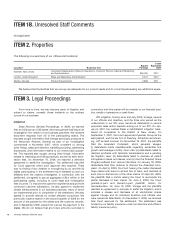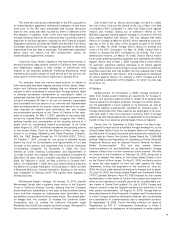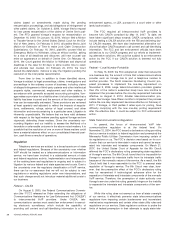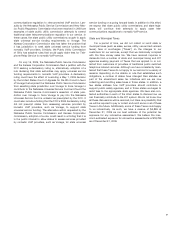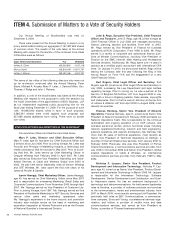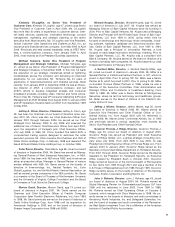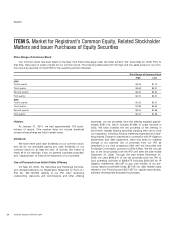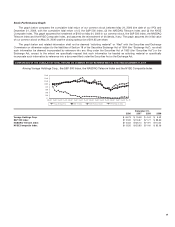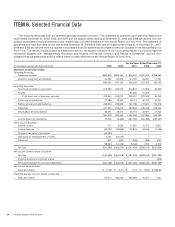Vonage 2009 Annual Report Download - page 24
Download and view the complete annual report
Please find page 24 of the 2009 Vonage annual report below. You can navigate through the pages in the report by either clicking on the pages listed below, or by using the keyword search tool below to find specific information within the annual report.customers. In addition, future regulatory developments could
increase our cost of doing business and limit our growth.
Our international operations are also subject to regulatory
risks, including the risk that regulations in some jurisdictions will
prohibit us from providing our services cost-effectively or at all,
which could limit our growth. Currently, there are several coun-
tries where regulations prohibit us from offering service. In addi-
tion, because customers can use our services almost anywhere
that a broadband Internet connection is available, including coun-
tries where providing VoIP services is illegal, the governments of
those countries may attempt to assert jurisdiction over us, which
could expose us to significant liability and regulation.
We identified a material weakness in our internal control
over financial reporting which was remediated as of
December 31, 2007 and may identify additional material
weaknesses in the future that may cause us to fail to meet
our reporting obligations or result in material misstate-
ments of our financial statements.
Our management is responsible for establishing and maintain-
ing adequate internal control over financial reporting. Internal
control over financial reporting is a process designed to provide
reasonable assurance regarding the reliability of financial report-
ing and the preparation of financial statements in accordance with
accounting principles generally accepted in the United States. A
material weakness is a deficiency, or a combination of deficien-
cies, in internal control over financial reporting, such that there is
a reasonable possibility that a material misstatement of the
company’s annual or interim financial statements will not be pre-
vented or detected on a timely basis. We reported a material
weakness that existed in the design of our internal control proce-
dures relating to recording stock-based compensation expense
during 2007, which was remediated as of December 31, 2007.
If we fail to maintain the adequacy of our internal controls, we
may not be able to conclude in the future that we have effective
internal control over financial reporting in accordance with the
Sarbanes-Oxley Act. Moreover, effective internal controls are
necessary for us to produce reliable financial reports and are
important to help prevent fraud. As a result, our failure to maintain
effective internal controls could result in the loss of investor con-
fidence in the reliability of our financial statements, which in turn
could harm the market value of our common stock. Any failure to
maintain effective internal controls also could impair our ability to
manage our business and harm our financial results.
Our common stockholders may suffer dilution in the
future upon exercise of our Convertible Notes.
In connection with the Financing, we issued $18,000
aggregate principal amount of Convertible Notes to Silver Point
Finance, LLC, certain of its affiliates, other third parties and affili-
ates of us. In 2009, an aggregate of $12,305 principal amount of
Convertible Notes were converted into 42,431 shares of our
common stock. If the remaining conversion rights in the Con-
vertible Notes are exercised, the exercising note holders may
obtain a significant equity interest in us and other stockholders
may experience significant and immediate dilution. Conversion of
the entire remaining $5,695 aggregate principal amount of Con-
vertible Notes at the initial conversion rate would have resulted in
an increase of our outstanding common stock from 199,898
shares (as of December 31, 2009) to 219,536 shares, an approx-
imate 9.0% dilution to our common stockholders.
Jeffrey A. Citron, our founder, Chairman and a significant
stockholder, exerts significant influence over us.
As of December 31, 2009, Mr. Citron beneficially owned
approximately 28.3% of our outstanding common stock, including
outstanding securities convertible into or exercisable for common
stock within 60 days of such date. As a result, Mr. Citron is able to
exert significant influence over all matters presented to our stock-
holders for approval, including election and removal of our direc-
tors and change of control transactions. In addition, as our
Chairman, Mr. Citron has and will continue to have significant
influence over our strategy and other matters. Mr. Citron’s inter-
ests may not always coincide with the interests of other holders of
our common stock.
We may be unable to fully realize the benefits of our net
operating loss (“NOL”) carry forwards if an ownership
change occurs.
If we were to experience another “change in ownership”
under Section 382 of the Internal Revenue Code (“Section 382”),
the NOL carry forward limitations under Section 382 would
impose an annual limit on the amount of the future taxable income
that may be offset by our NOL generated prior to the change in
ownership. If a change in ownership were to occur, we may be
unable to use a significant portion of our NOL to offset future
taxable income. In general, a change in ownership occurs when,
as of any testing date, there has been a cumulative change in the
stock ownership of the corporation held by 5% stockholders of
more than 50 percentage points over an applicable three-year
period. For these purposes, a 5% stockholder is generally any
person or group of persons that at any time during an applicable
three-year period has owned 5% or more of our outstanding
common stock. In addition, persons who own less than 5% of the
outstanding common stock are grouped together as one or more
“public group” 5% stockholders. Under Section 382, stock
ownership would be determined under complex attribution rules
and generally includes shares held directly, indirectly (though
intervening entities) and constructively (by certain related parties
and certain unrelated parties acting as a group).
The market price of our common stock has been and may
continue to be volatile, and purchasers of our common
stock could incur substantial losses.
Securities markets experience significant price and volume
fluctuations. This market volatility, as well as general economic
conditions, could cause the market price of our common stock to
fluctuate substantially. The trading price of our common stock has
been, and is likely to continue to be, volatile. Many factors that are
beyond our control may significantly affect the market price of our
shares. These factors include:
>changes in our earnings or variations in operating results;
>any shortfall in revenue or increase in losses from levels
expected by securities analysts;
>judgments in our litigation;
>changes in regulatory policies or tax law;
>operating performance of companies comparable to us; and
>general economic trends and other external factors.
If any of these factors causes the price of our common stock
to fall, investors may not be able to sell their common stock at or
above their respective purchase prices.
16 VONAGE ANNUAL REPORT 2009


